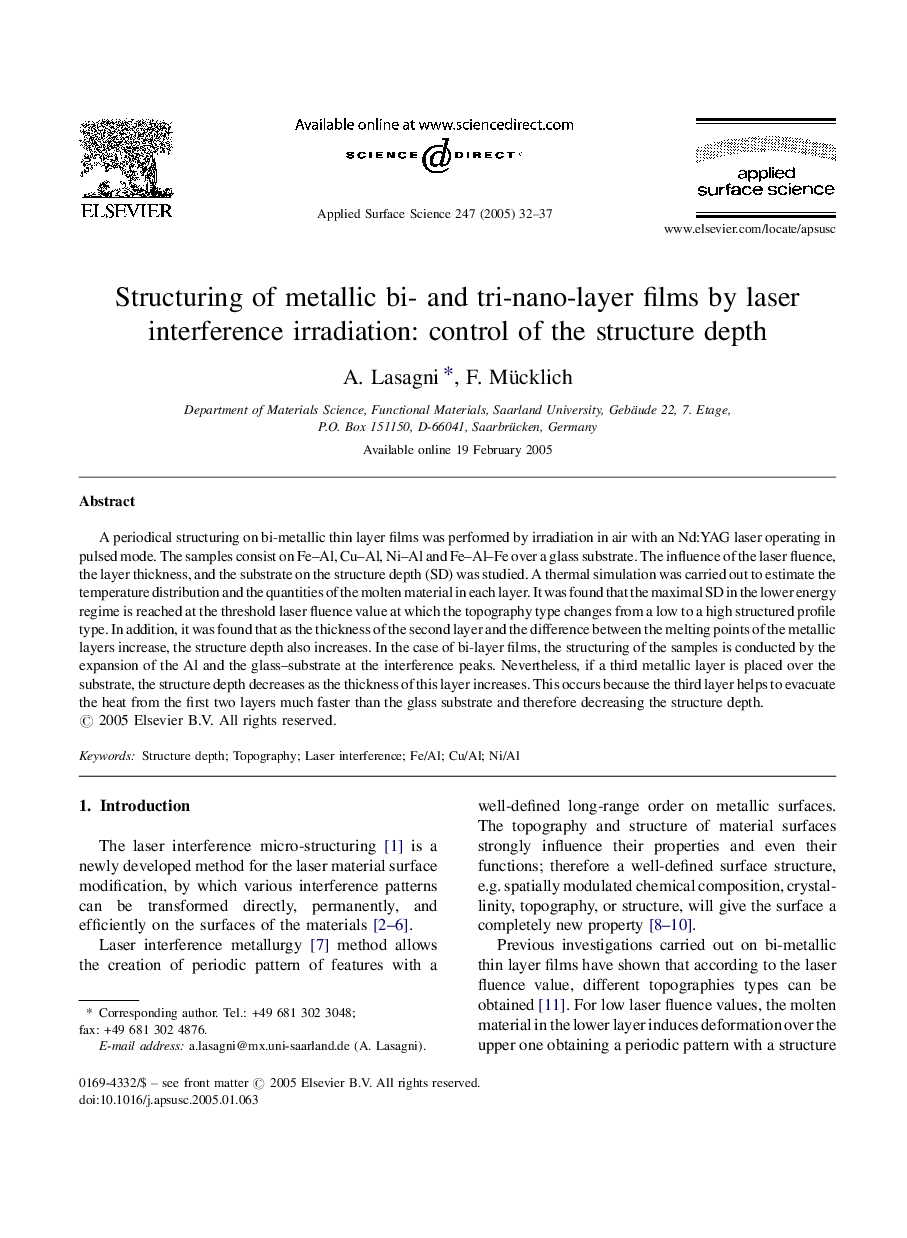| Article ID | Journal | Published Year | Pages | File Type |
|---|---|---|---|---|
| 9567083 | Applied Surface Science | 2005 | 6 Pages |
Abstract
A periodical structuring on bi-metallic thin layer films was performed by irradiation in air with an Nd:YAG laser operating in pulsed mode. The samples consist on Fe-Al, Cu-Al, Ni-Al and Fe-Al-Fe over a glass substrate. The influence of the laser fluence, the layer thickness, and the substrate on the structure depth (SD) was studied. A thermal simulation was carried out to estimate the temperature distribution and the quantities of the molten material in each layer. It was found that the maximal SD in the lower energy regime is reached at the threshold laser fluence value at which the topography type changes from a low to a high structured profile type. In addition, it was found that as the thickness of the second layer and the difference between the melting points of the metallic layers increase, the structure depth also increases. In the case of bi-layer films, the structuring of the samples is conducted by the expansion of the Al and the glass-substrate at the interference peaks. Nevertheless, if a third metallic layer is placed over the substrate, the structure depth decreases as the thickness of this layer increases. This occurs because the third layer helps to evacuate the heat from the first two layers much faster than the glass substrate and therefore decreasing the structure depth.
Keywords
Related Topics
Physical Sciences and Engineering
Chemistry
Physical and Theoretical Chemistry
Authors
A. Lasagni, F. Mücklich,
